by Craig Brelsford
Founder, shanghaibirding.com
As summer melts into fall, Pudong’s Cape Nanhui continues to prove to be one of the best birding locations in China. In the period 26 Aug. to 8 Sept., I birded four days at the most southeasterly point of Shanghai, as well as at other key locations in Earth’s Greatest City. I noted 106 species.
Highlights were Brown-chested Jungle Flycatcher at Microforest 1, beautiful white-morph Amur Paradise Flycatcher at Binhai Forest Park, Fairy Pitta in the microforests of Cape Nanhui, Greater Painted-snipe holding on in a canal near the coast, Asian Dowitcher at South Pond, Chinese Egret at North Pond and on South Beach, and Pacific Golden Plover at the sod farm (31.112586, 121.824742) south of Pudong Airport. Sakhalin Leaf Warbler and Pale-legged Leaf Warbler were calling in the Magic Parking Lot (30.884898, 121.968229), and endangered Far Eastern Curlew and Great Knot were recorded at Nanhui. Crested Goshawk appeared in inner-city Zhongshan Park.
Here are some of the best birds:
Amur Paradise Flycatcher
Terpsiphone incei
Japanese Paradise Flycatcher
T. atrocaudata
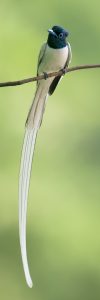
3 Amur found 27 Aug. at Binhai Forest Park, the heavily wooded green space near Cape Nanhui, 4.5 km inland from the East China Sea. A stunning white-morph male and rufous-morph were continuously together, and we found a single rufous-morph in another part of the park. The white-morph as well as the rufous-morph accompanying it were calling. I have seen dozens of paradise flycatchers in Shanghai over the years and heard only one call (a Japanese for 1 or 2 seconds). Why were the Amur at Binhai Forest Park calling?
Binhai Forest Park is visited little and birded even less; could this quiet, thickly wooded park hold breeding Amur Paradise Flycatcher? As the white-morph male looks like something out of a fairy tale and is a bird even a non-birder would recognize, I asked park employees whether they had seen it. All said no.
The white-morph Amur that U.S. birder Tom Hurley and I saw was only the second I had ever beheld and a first for me in Shanghai. At Dongzhai National Nature Reserve, Henan, on 5 June 2010, I photographed the white-morph shown right. The Binhai white-morph lacked the long tail feathers of the bird I saw at Dongzhai but was still an unforgettable sight.
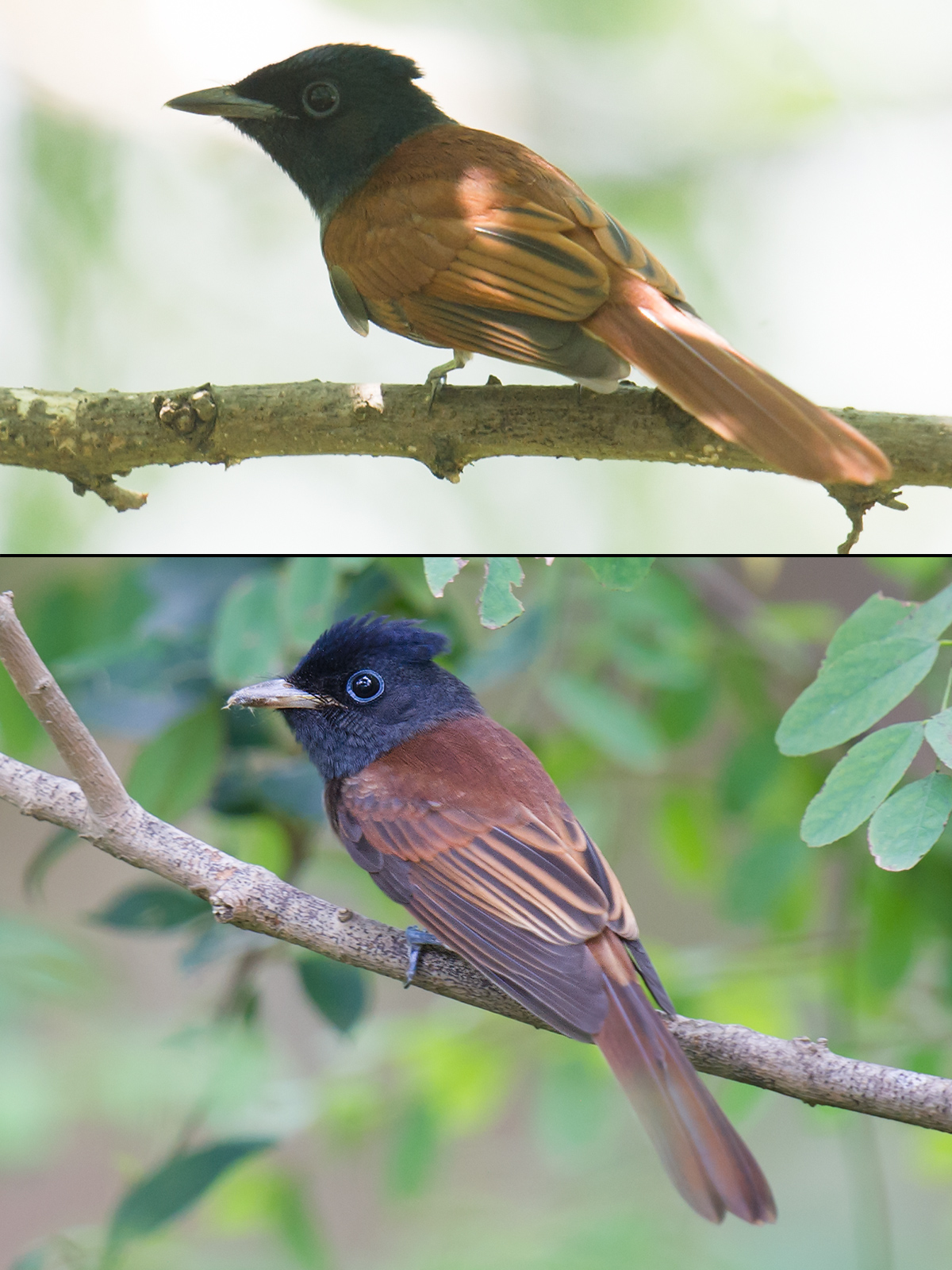
Japanese Paradise Flycatcher is the more common of the two paradise flycatchers in Shanghai. The photo above shows the differences in upperpart coloration between rufous-morph Amur Paradise Flycatcher and Japanese Paradise Flycatcher.
Fairy Pitta Pitta nympha
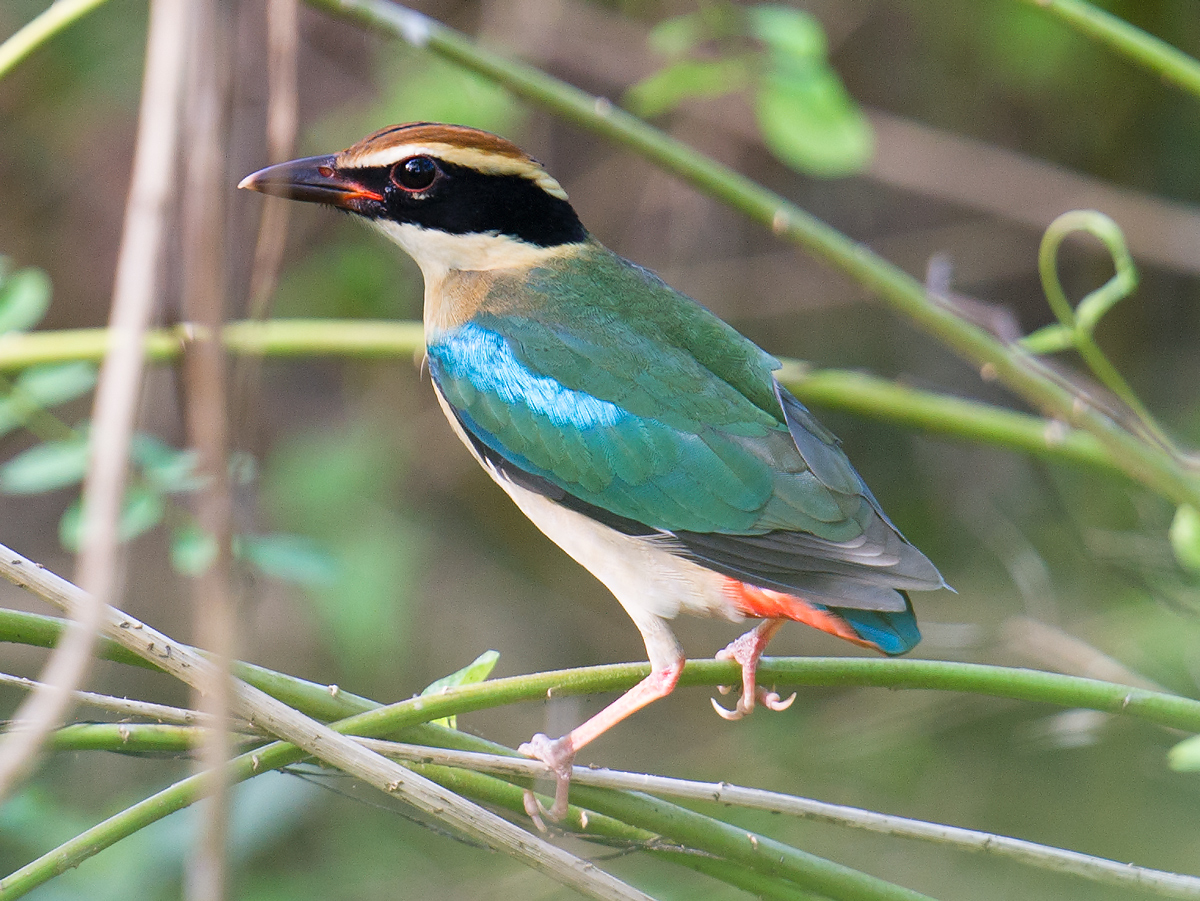
On 4 Sept. at Nanhui, my wife, Elaine Du, and I sneaked away from the action in Nanhui’s Microforest 1, where the photographers were set up. Microforest 4 was devoid of humans and peaceful. I tiptoed in. I scanned the undergrowth before me and, to my surprise, found a Fairy Pitta.
The pitta was standing on the ground, almost completely blanketed by a tangle of leaves, branches, and vines. Its big black eye was fixed on me. It didn’t move. I looked at the pitta, the pitta at me.
We stared at each other for 10 minutes.
Thus roosts the pitta during migration. It parks itself in thickets and waits. It bides its time, conserves its energy. Somewhere south of Shanghai, it will veer off the coast and fly non-stop across the South China Sea to Borneo, where it will spend the winter.
The pittas are mainly tropical species. Most are short-distance migrants. Not Fairy Pitta. No pitta invades the temperate world as deeply as Fairy Pitta; none makes so audacious an incursion into the north. None makes so long and daring a migration across hundreds of miles of sea.
My pitta was saving up its energy for its life-or-death run across the sea. Good luck, you explorer, you risk-taker! Good luck, Fairy Pitta.
Greater Painted-snipe
Rostratula benghalensis
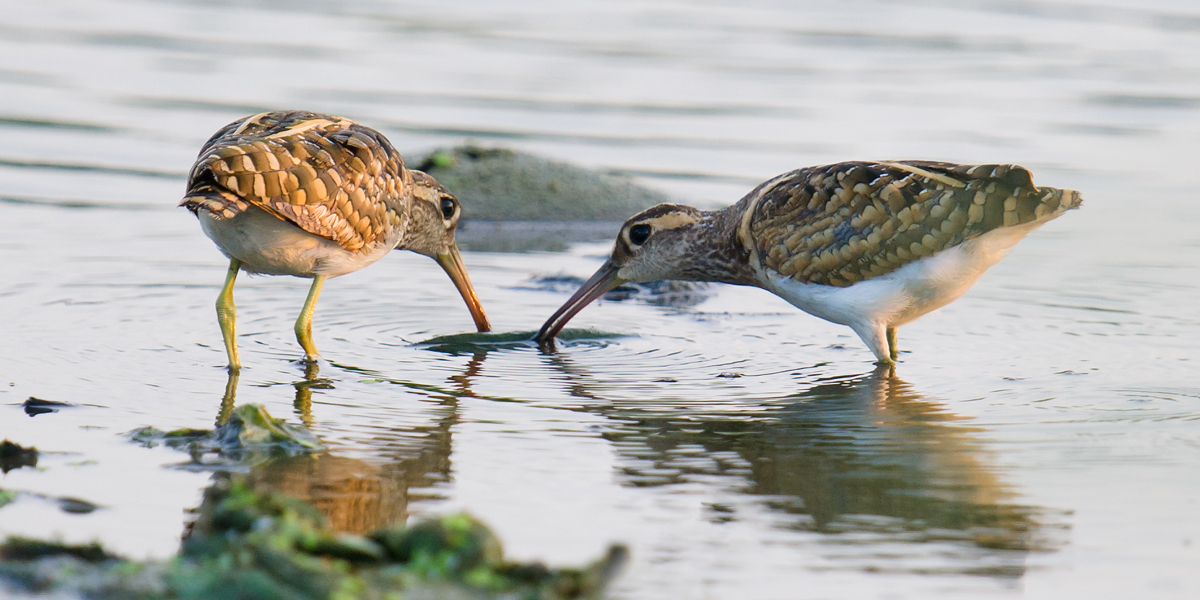
Viewed with Elaine at dusk 3 Sept. then viewed again the next morning at dawn. For weeks, the painted-snipes have been found at a single spot (30.939534, 121.955370) in a trash-strewn canal. Earlier, when news of the painted-snipe at Cape Nanhui first broke, I wrote a post in which I regretted sharing the location where were found the painted-snipes, a rare species in Shanghai. As things stand now, I can breathe easier; the many photographers who have visited the location have had no ill effect. The birds I found 4 Sept. were aware of me but behaved normally. They fed, drank, and preened. I used my car as a blind and never got out. The painted-snipes at Nanhui tolerate photographers confined to their cars.
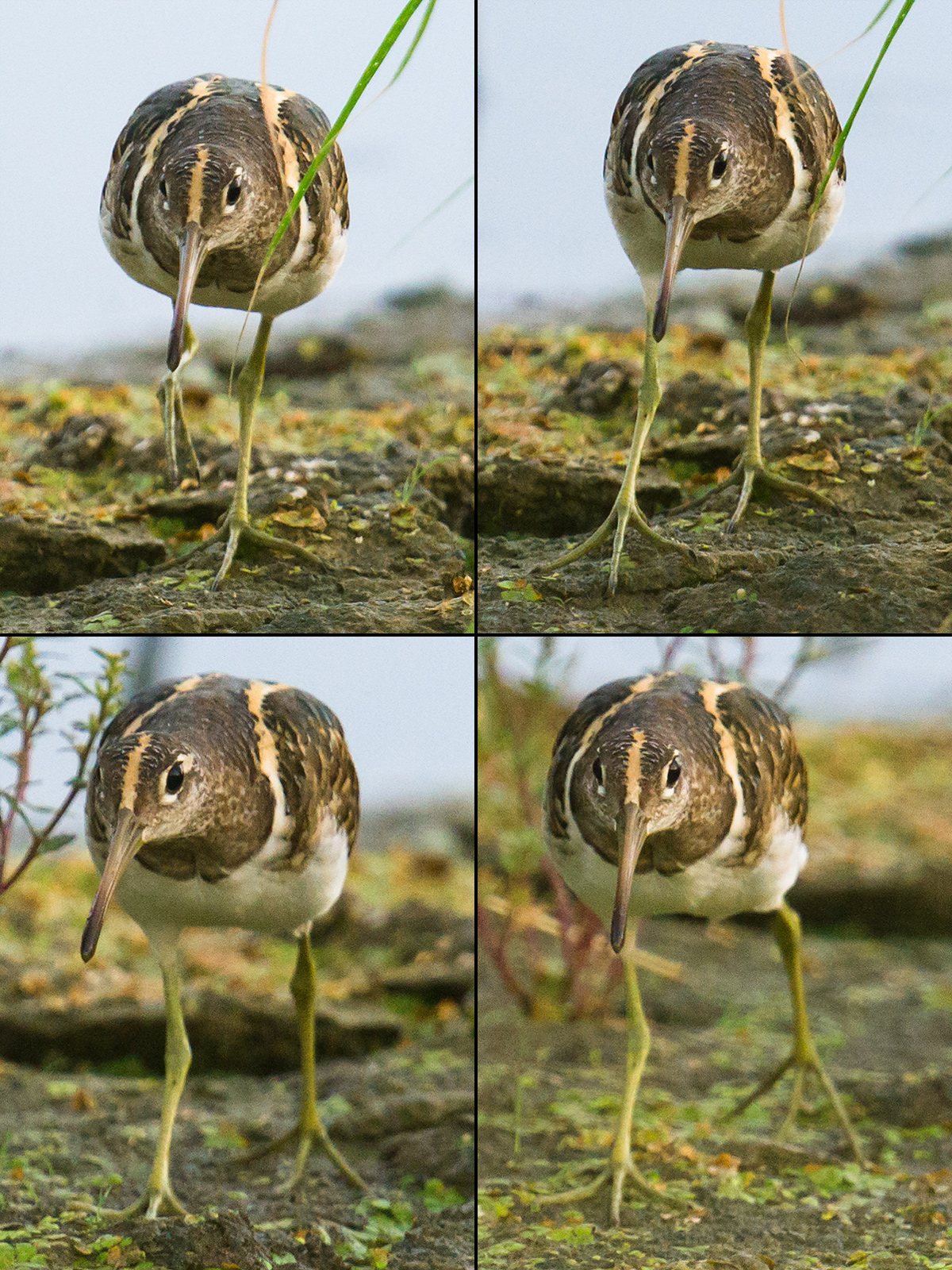
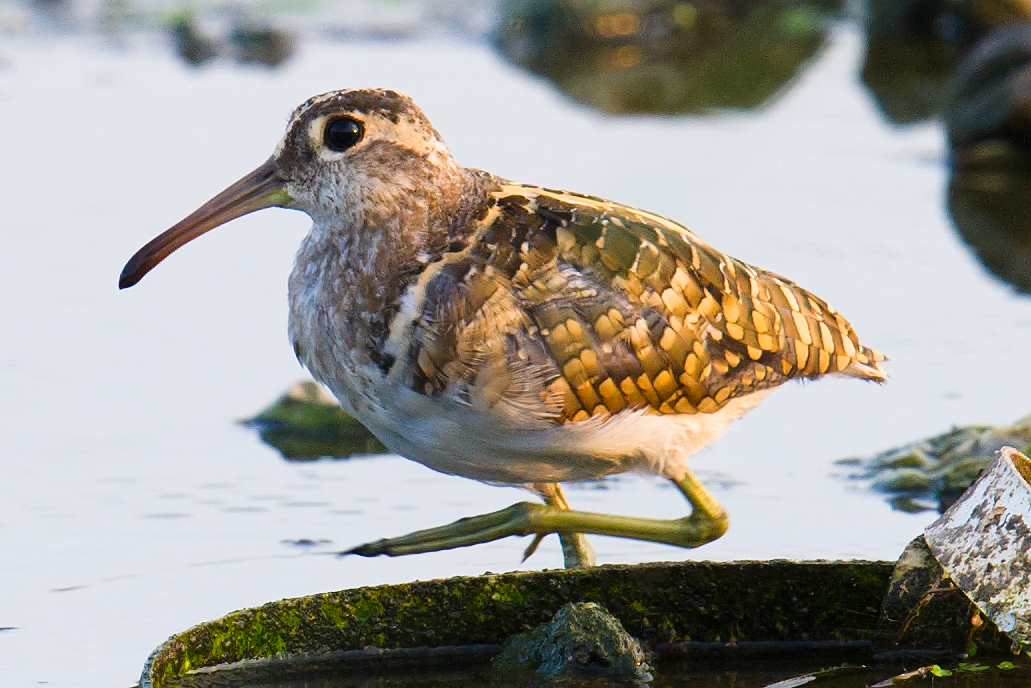
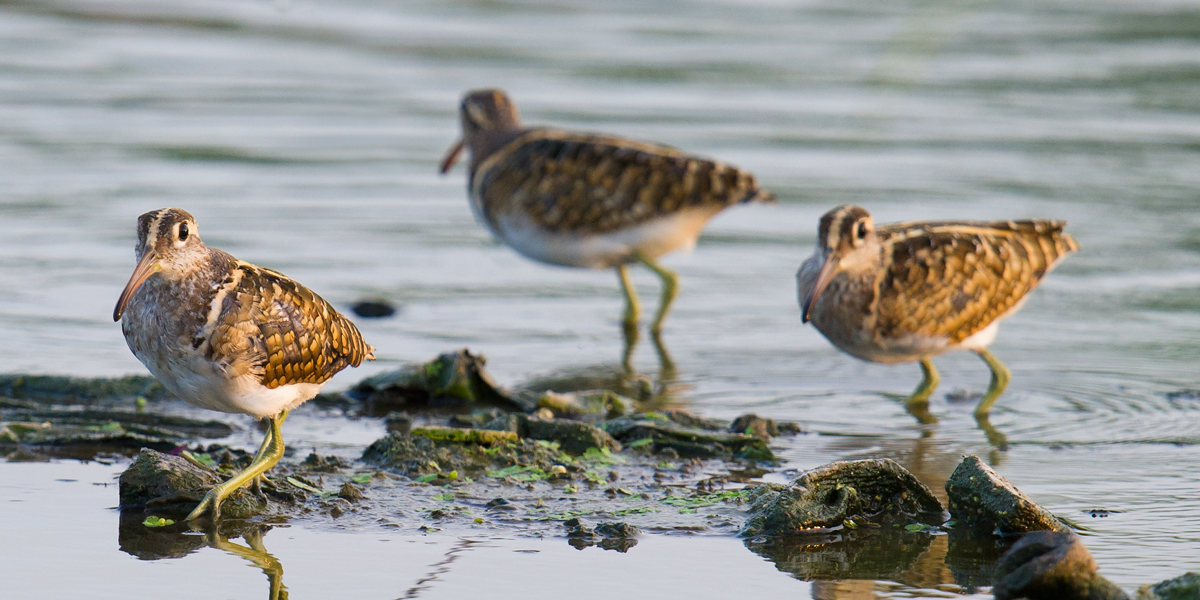
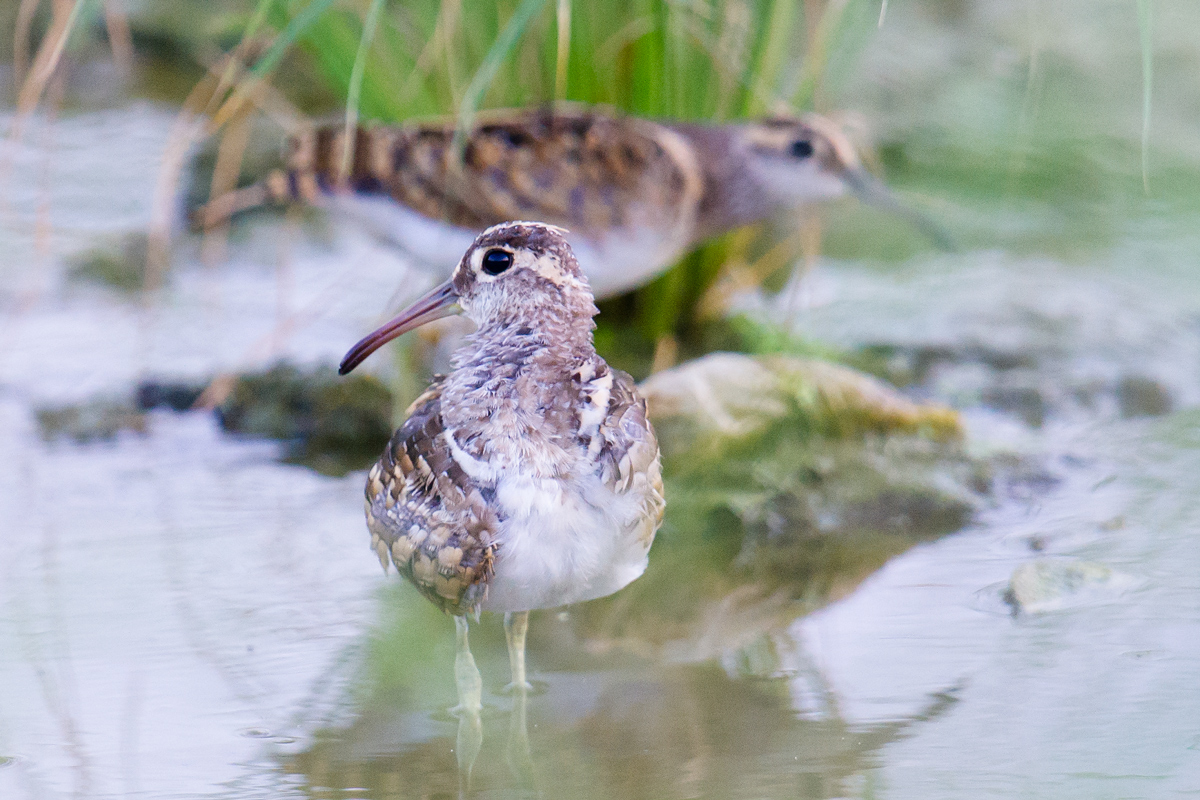
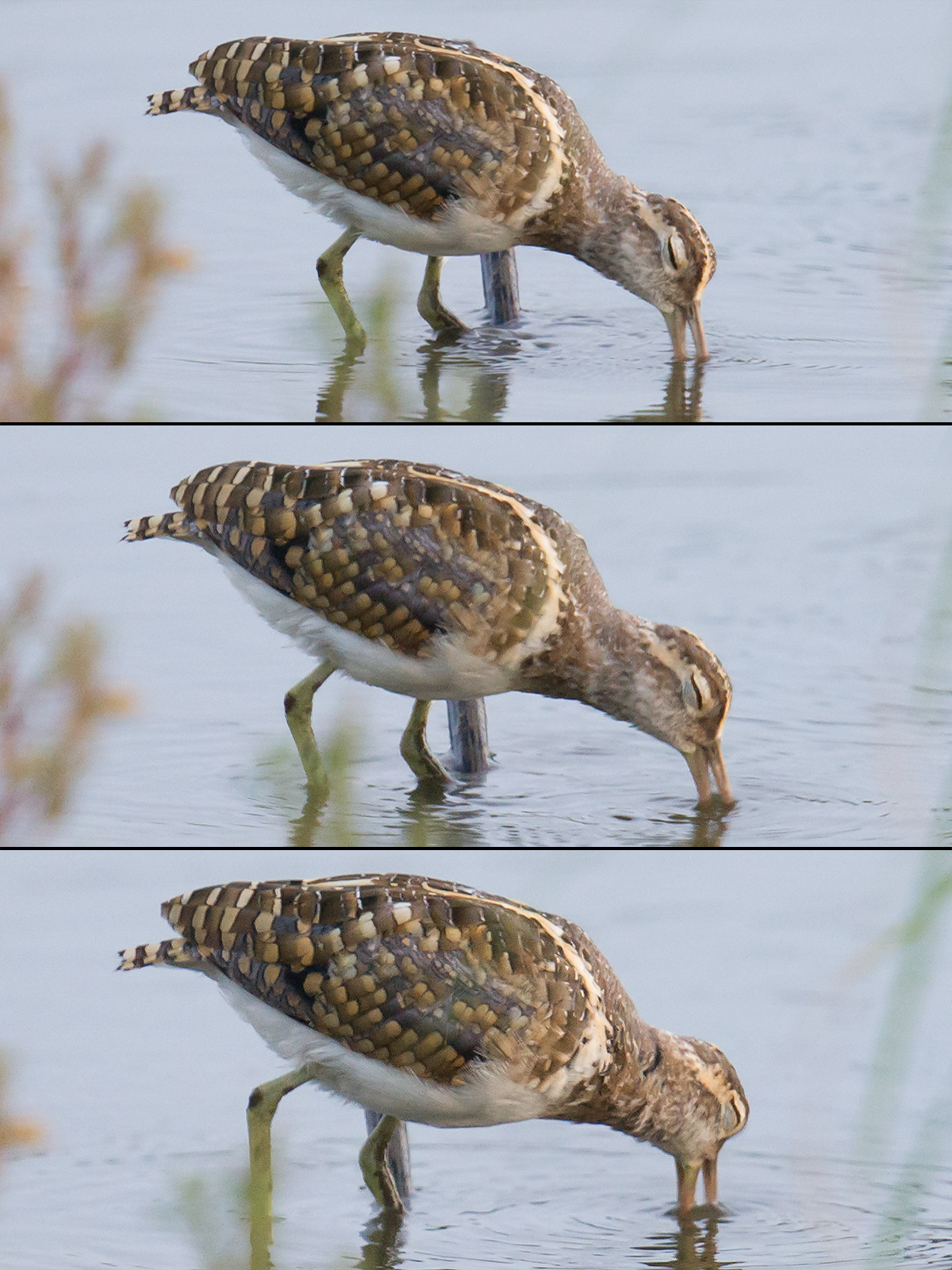
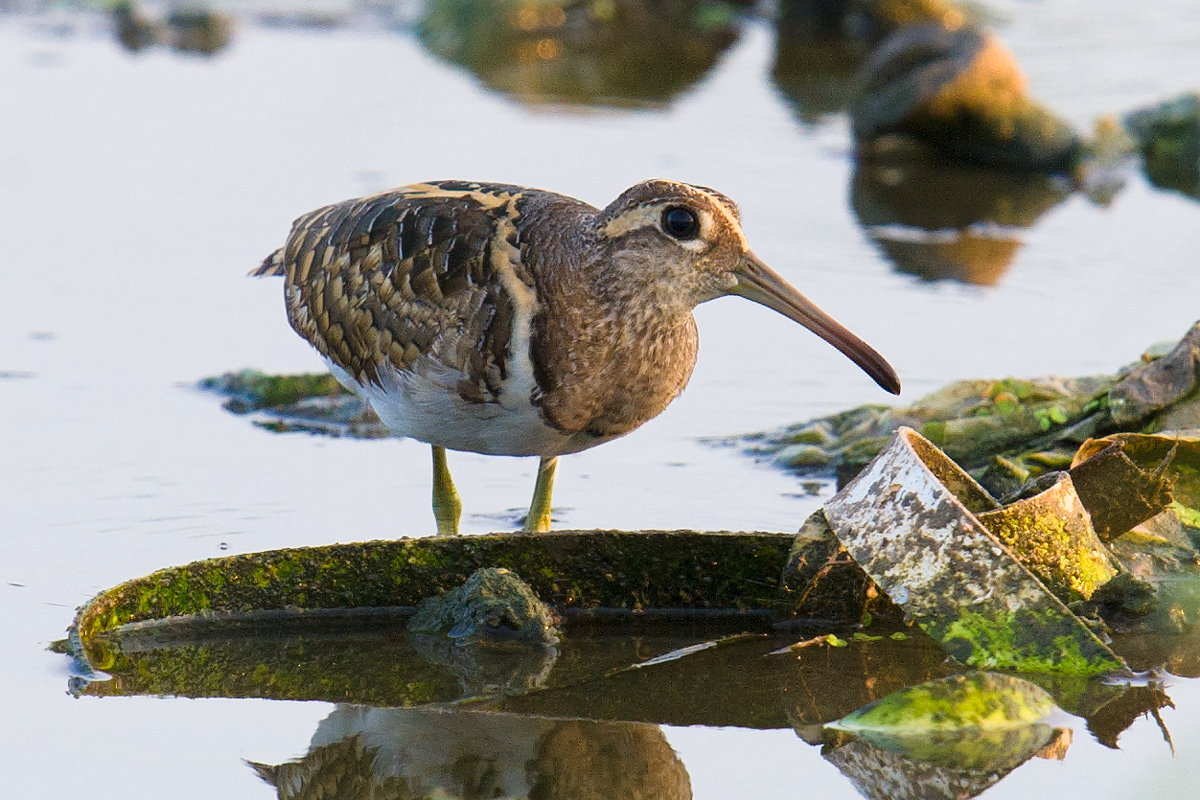
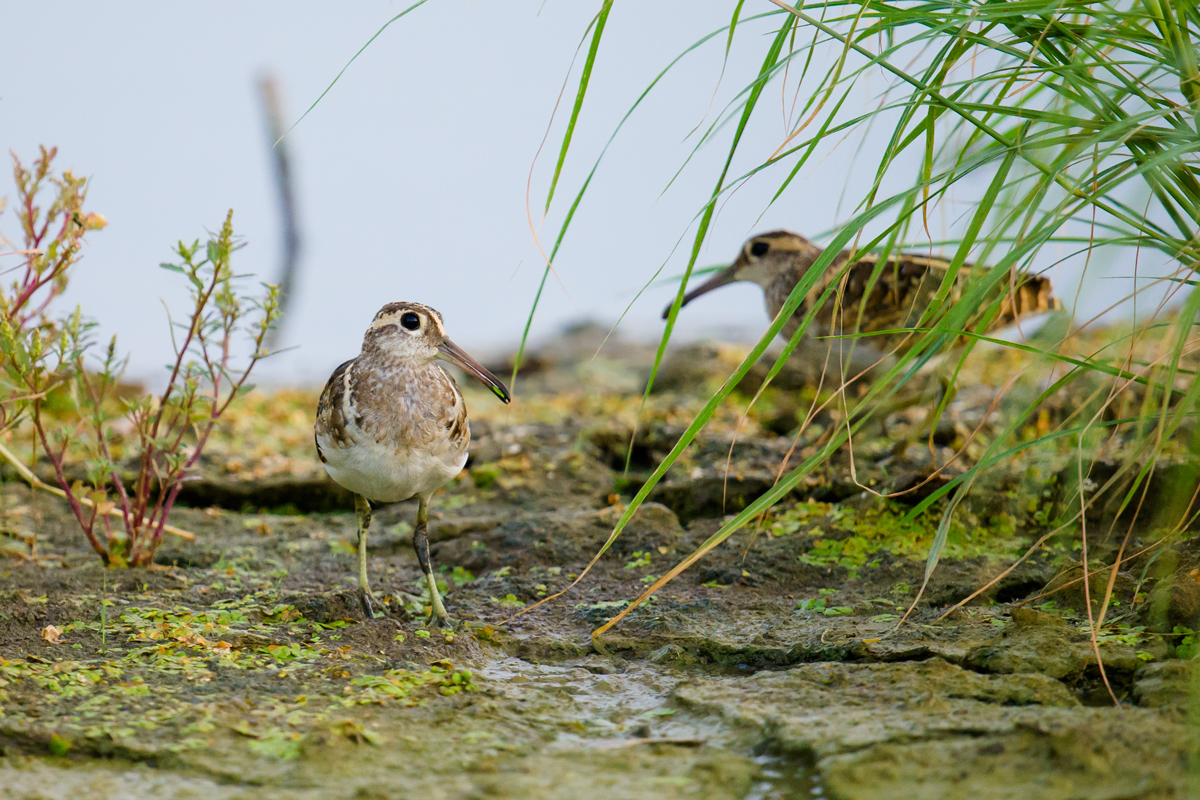
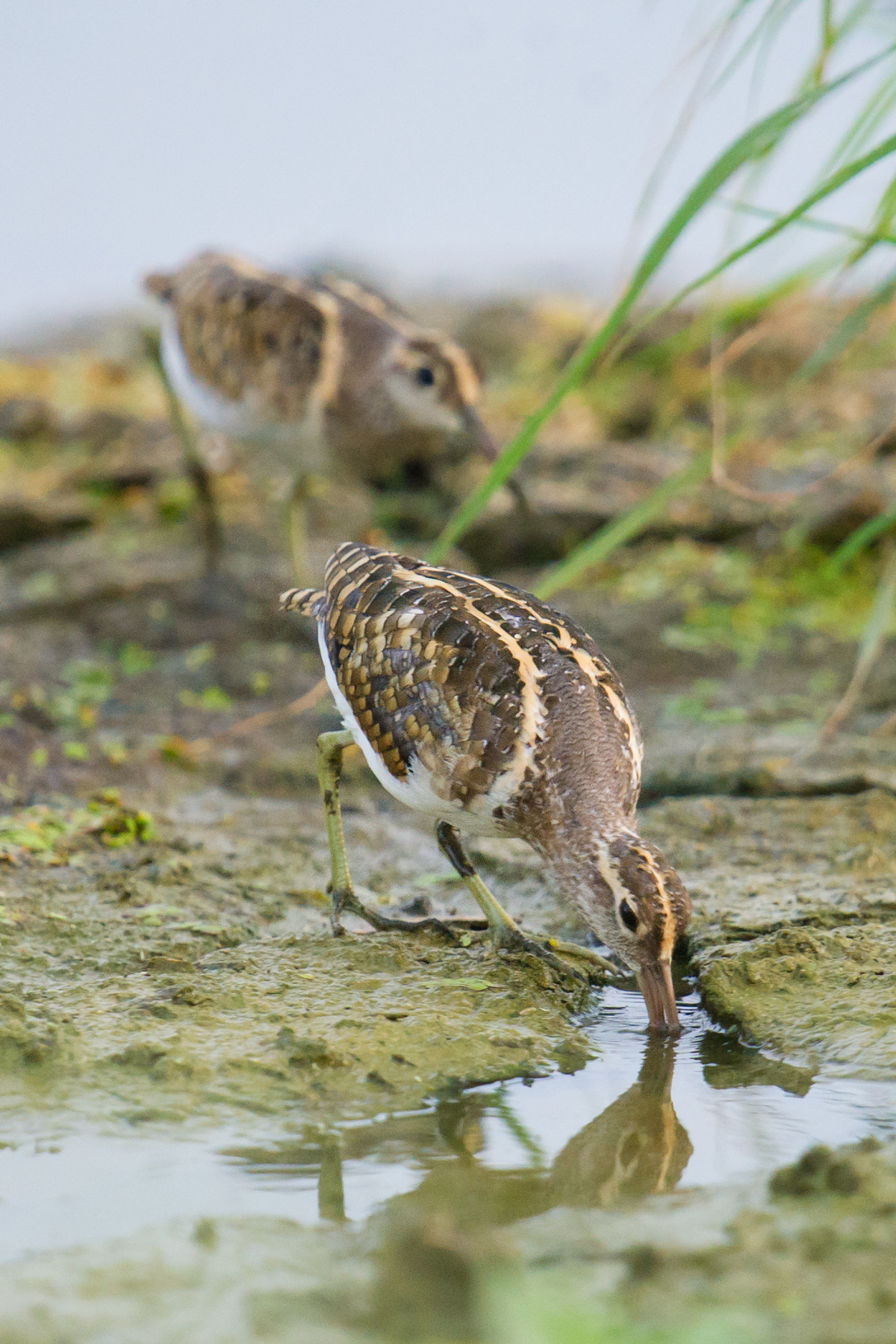
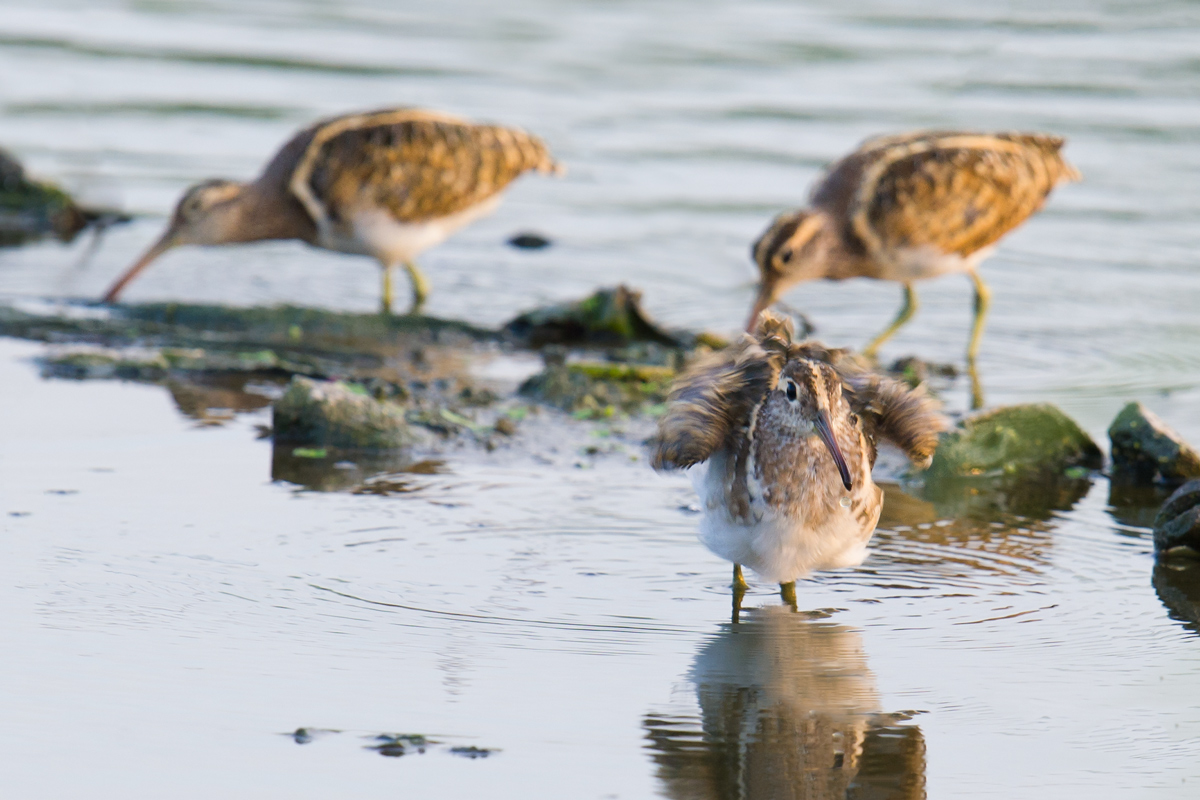
Asian Dowitcher
Limnodromus semipalmatus
27 Aug., South Pond. Juvenile. Videoed by me using my iPhone 6, adapter by the U.S. company PhoneSkope, and my Swarovski ATX-95 spotting scope:
Chinese Egret Egretta eulophotes
Below, video of Chinese Egret 26 Aug. at Cape Nanhui showing differences between Chinese Egret and Little Egret.
Other highlights:
Yellow Bittern Ixobrychus sinensis
Photographed by me in gorgeous morning light 4 Sept. at Cape Nanhui.
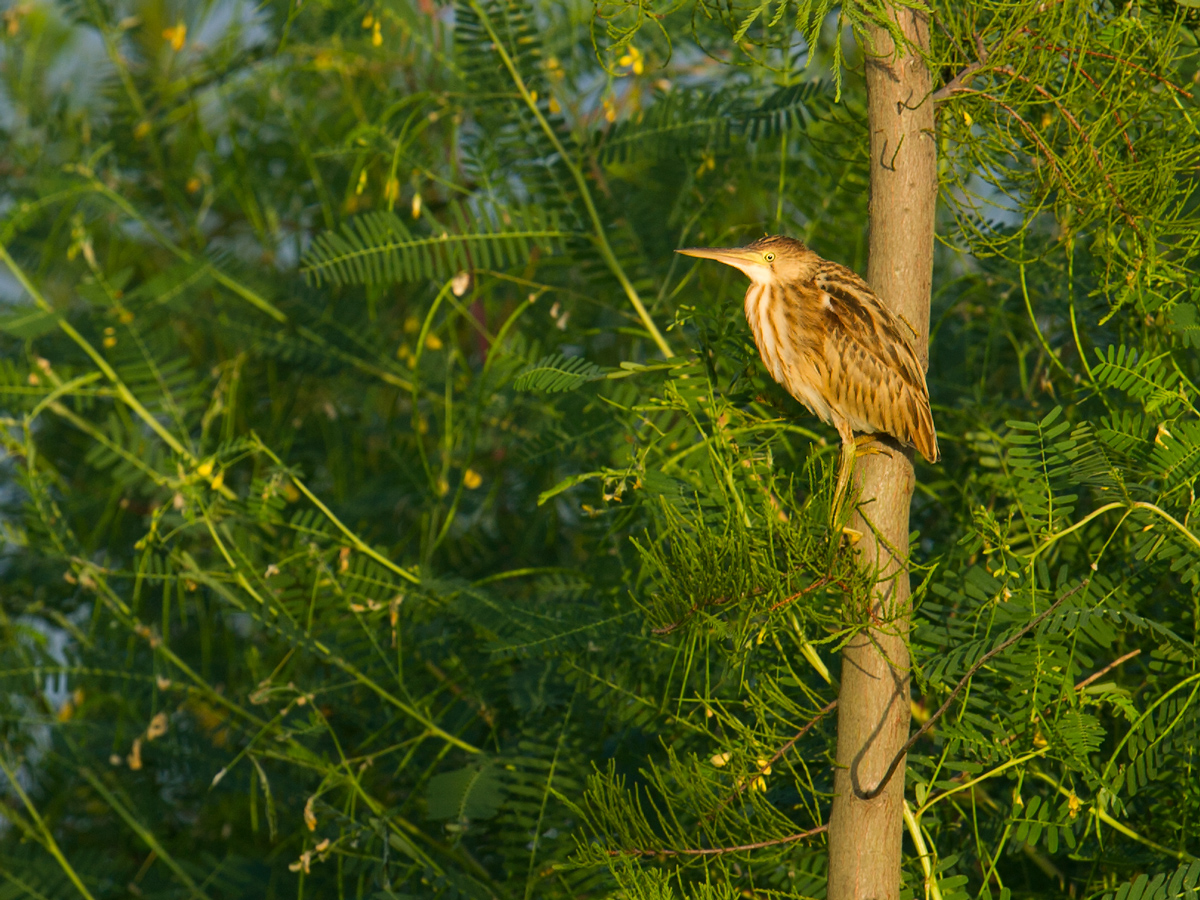
Black Bittern Ixobrychus flavicollis
Uncommon in Shanghai. Found 26 Aug. at Cape Nanhui.
Striated Heron Butorides striata
Uncommon in Shanghai. Found 27 Aug. at Binhai Forest Park.
Crested Goshawk Accipiter trivirgatus
Adult plus another goshawk calling unseen at inner-city Zhongshan Park on 8 Sept.
I videoed the goshawks:
Pacific Golden Plover Pluvialis fulva
Grey-headed Lapwing Vanellus cinereus
27 Aug. at sod farm south of Pudong Airport.
Great Knot Calidris tenuirostris
In high-tide roost 4 Sept. on South Beach (30.860673, 121.925113), just north of Donghai Bridge at Cape Nanhui.
Curlew Sandpiper C. ferruginea
South Pond, Cape Nanhui, 26 Aug. Video:
Pin-tailed Snipe Gallinago stenura
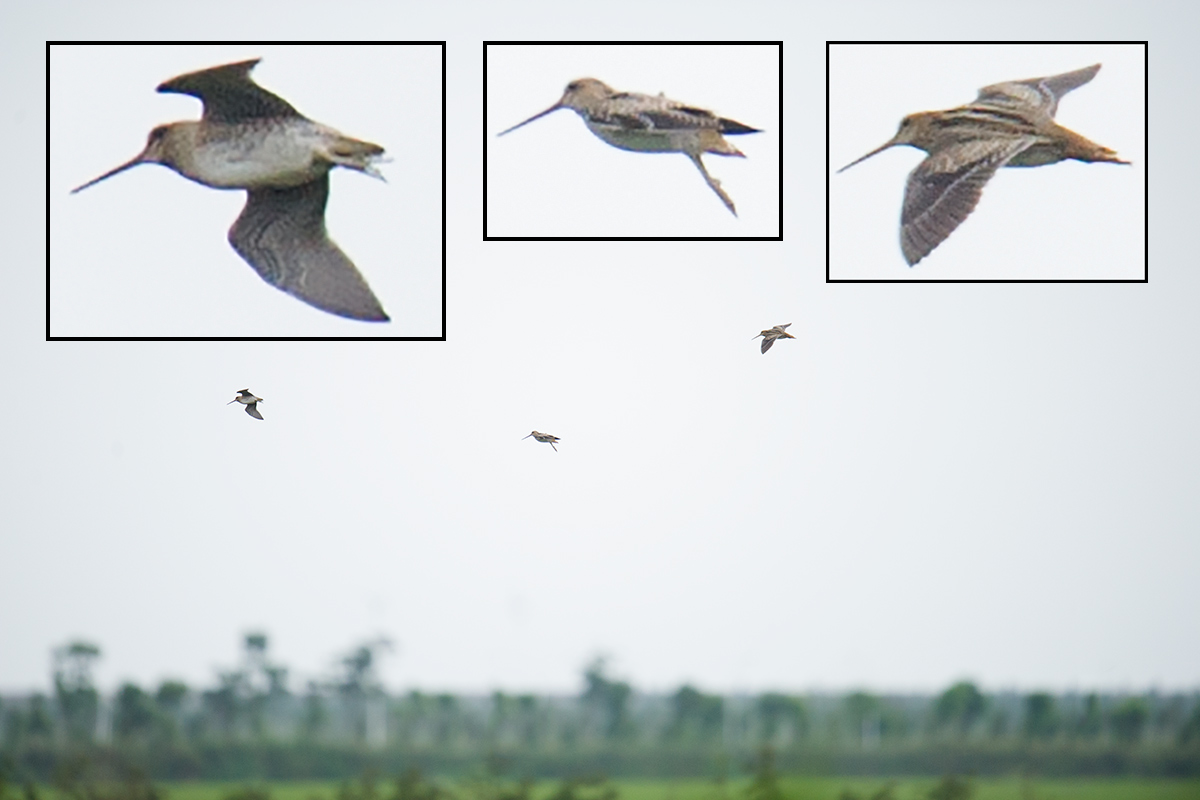
Party of 3 on 26 Aug. at Cape Nanhui. When flushed, made loud, raspy call. I compared that call to calls of Pin-tailed Snipe from xeno-canto.org. The match was perfect. Lookalike Swinhoe’s Snipe G. megala rarely calls when flushed. Note dark underwing, which allows us to rule out Common Snipe G. gallinago. The snipe flew high and landed only 50 m away.
Gull-billed Tern Gelochelidon nilotica
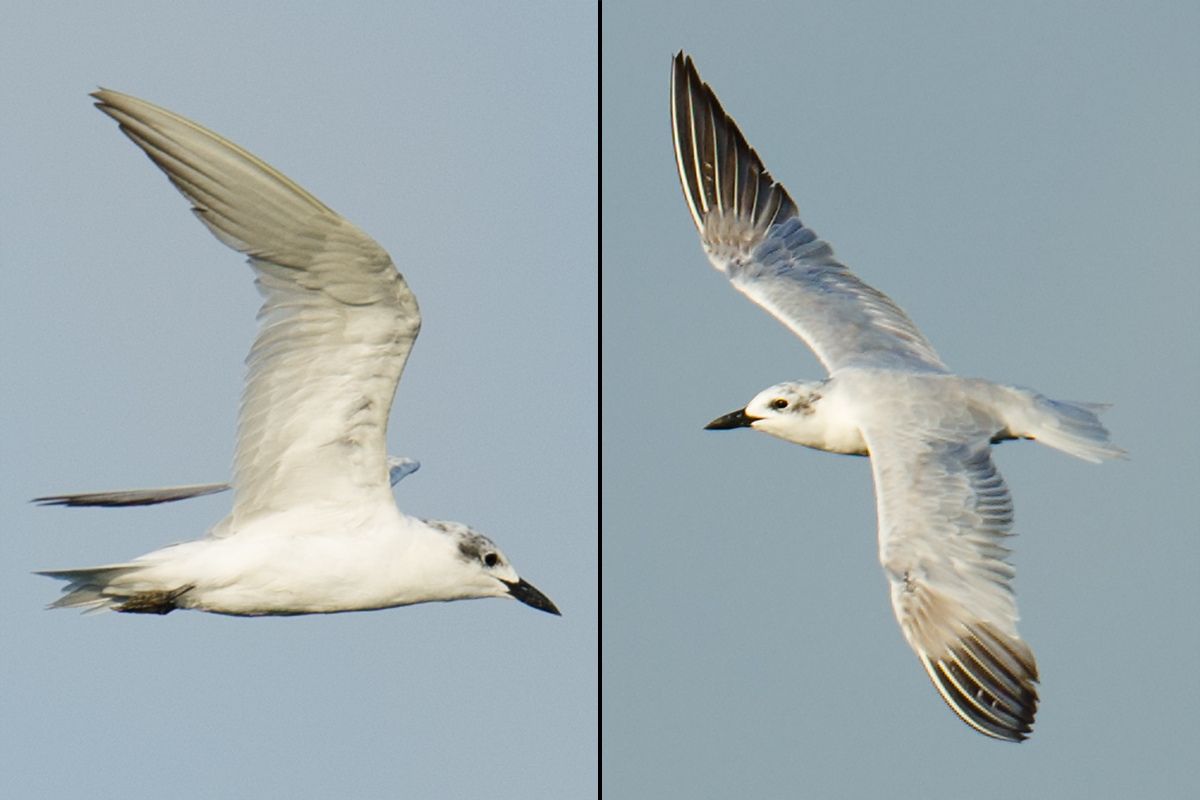
The canals on the inland side of the sea wall were resounding with the characteristic yaps of this passage migrant. A clear photo is especially useful for discerning the thick bill.
Pale-legged Leaf Warbler
Phylloscopus tenellipes
Sakhalin Leaf Warbler
P. borealoides
In the wake of my post of 31 Aug. about distinguishing Pale-legged from Sakhalin Leaf Warbler by call, I was hoping to find more members of this species pair. On 4 Sept. at Pudong’s Cape Nanhui, I was richly rewarded. For more, see my 10 Sept. post, “Pale-Sak Calls: An Addendum.”
Sand Martin Riparia riparia
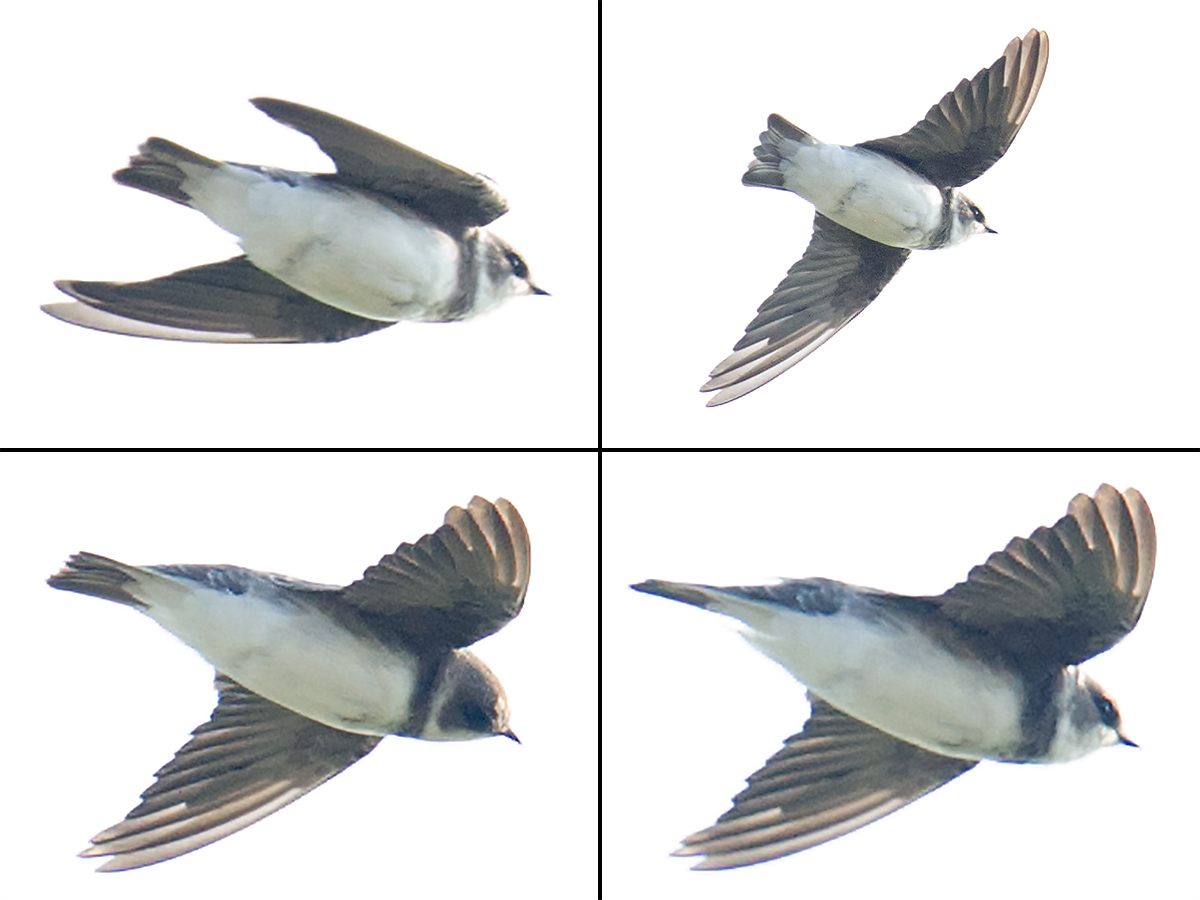
Riparia riparia is an uncommon passage migrant in Shanghai. Note the well-defined breast band on my bird, distinguishing it from Pale Martin Riparia diluta, which has an ill-defined breast band.
Siberian Blue Robin Larvivora cyane
It’s worth stressing how good is our opportunity here in Shanghai to view Siberian Blue Robin for a few short weeks each spring and fall. On the breeding grounds up in northern China, the males sing loudly and beautifully but are very hard to see; no Siberian Blue Robin I experienced on the breeding grounds ever sang from anything like an exposed perch. The few I was able to see in Elaine’s hometown of Boli, Heilongjiang sang on or near the ground. Females are almost impossible to see; in fact, I saw not one in Heilongjiang in May-June 2016. Siberian Blue Robin are also apparently hard to see on their wintering grounds in south China and Southeast Asia. Places such as Cape Nanhui are probably among the best places in the world to view this common but shy species. We Shanghai birders have yet another reason to count ourselves lucky.
Also noted by me in Shanghai 27 Aug.–8 Sept.:
Garganey Spatula querquedula
Common Pheasant Phasianus colchicus
Little Grebe Tachybaptus ruficollis
Grey Heron Ardea cinerea
Purple Heron A. purpurea
Great Egret A. alba
Intermediate Egret A. intermedia
Little Egret Egretta garzetta
Eastern Cattle Egret Bubulcus coromandus
Black-crowned Night Heron Nycticorax nycticorax
Chinese Pond Heron Ardeola bacchus
Common Moorhen Gallinula chloropus
Eurasian Coot Fulica atra
Black-winged Stilt Himantopus himantopus
Pied Avocet Recurvirostra avosetta
Kentish Plover Charadrius alexandrinus
Lesser Sand Plover C. mongolus
Greater Sand Plover C. leschenaultii
Little Ringed Plover C. dubius
Whimbrel Numenius phaeopus
Far Eastern Curlew N. madagascariensis
Eurasian Curlew N. arquata
Black-tailed Godwit Limosa limosa
Ruddy Turnstone Arenaria interpres
Red Knot Calidris canutus
Broad-billed Sandpiper C. falcinellus
Sharp-tailed Sandpiper C. acuminata
Long-toed Stint C. subminuta
Red-necked Stint C. ruficollis
Sanderling C. alba
Dunlin C. alpina
Common Snipe Gallinago gallinago
Red-necked Phalarope Phalaropus lobatus
Common Sandpiper Actitis hypoleucos
Grey-tailed Tattler Tringa brevipes
Spotted Redshank T. erythropus
Common Greenshank T. nebularia
Marsh Sandpiper T. stagnatilis
Wood Sandpiper T. glareola
Common Redshank T. totanus
Oriental Pratincole Glareola maldivarum
Black-tailed Gull Larus crassirostris
White-winged Tern Chlidonias leucopterus
Whiskered Tern C. hybrida
Common Tern Sterna hirundo
Feral Pigeon (Rock Dove) Columba livia
Red Turtle Dove Streptopelia tranquebarica
Spotted Dove S. chinensis
Himalayan Swiftlet Aerodramus brevirostris
Lesser Coucal Centropus bengalensis
Oriental Dollarbird Eurystomus orientalis
Eurasian Wryneck Jynx torquilla
Common Kingfisher Alcedo atthis
Common Kestrel Falco tinnunculus
Black-winged Cuckooshrike Coracina melaschistos
Tiger Shrike Lanius tigrinus
Brown Shrike L. cristatus
Long-tailed Shrike L. schach
Black-naped Oriole Oriolus chinensis
Japanese Tit Parus minor
Black-throated Bushtit Aegithalos concinnus
Japanese White-eye Zosterops japonicus
Barn Swallow Hirundo rustica
Light-vented Bulbul Pycnonotus sinensis
Arctic/Kamchatka Leaf/Japanese Leaf Warbler Phylloscopus borealis/examinandus/xanthodryas
Eastern Crowned Warbler P. coronatus
Oriental Reed Warbler Acrocephalus orientalis
Thick-billed Warbler Arundinax aedon
Zitting Cisticola Cisticola juncidis
Plain Prinia Prinia inornata
Reed Parrotbill Calamornis heudei
Vinous-throated Parrotbill Sinosuthora webbiana
Javan Myna Acridotheres javanicus
Crested Myna A. cristatellus
Chinese Blackbird Turdus mandarinus
Grey-streaked Flycatcher Muscicapa griseisticta
Asian Brown Flycatcher M. dauurica
Oriental Magpie-Robin Copsychus saularis
Blue-and-white Flycatcher Cyanoptila cyanomelana
Yellow-rumped Flycatcher Ficedula zanthopygia
Chinese Grosbeak Eophona migratoria
Eurasian Tree Sparrow Passer montanus
Eastern Yellow Wagtail Motacilla tschutschensis tschutschensis
White Wagtail M. alba
Featured image: All-star birds of late summer at Pudong’s Cape Nanhui: Clockwise from top left, Brown-chested Jungle Flycatcher, Fairy Pitta, Greater Painted-snipe, and Great Knot. (Craig Brelsford)

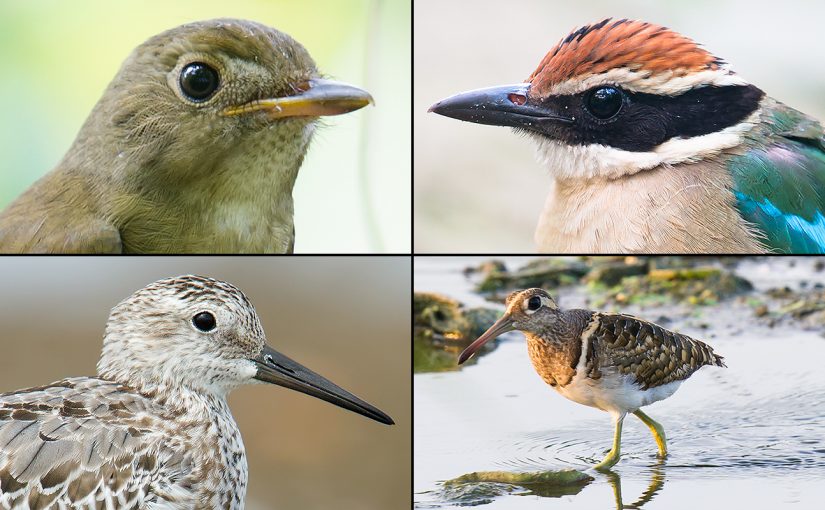
typhoon to pass pretty close; could be interesting
Hello Craig,
Firstly, I just want to say how much I enjoy your blog.
I visit China about once a year for work trips (I am an ecologist with colleagues in Beijing and Nanjing), and always try to fit some birding into my visits. My next trip is from 18 to 24 September, and I will spend a few days in Nanjing followed by a trip to Kaifeng (Henan). I wondered if you might be able to suggest where would be the best sites in/around Nanjing for finding migrants. I have visited Laoshan twice before, and will probably head there, unless you can make a different suggestion? Also, do you know Kaifeng, and can you suggest anywhere there?
Thanks in anticipation of your help, and for writing such an enjoyable and informative blog. If you are interested, I will share my sightings with you after my trip.
Best wishes,
Jason Chapman
Hi Jason,
Welcome to shanghaibirding.com! I would do Laoshan again and visit Nanjing Zhongshan Botanical Garden. To read my report on my 2013 day-visit to Nanjing Zhongshan, click here.
I’ll be happy to get your report from your doings in Nanjing. Thank you!
Craig